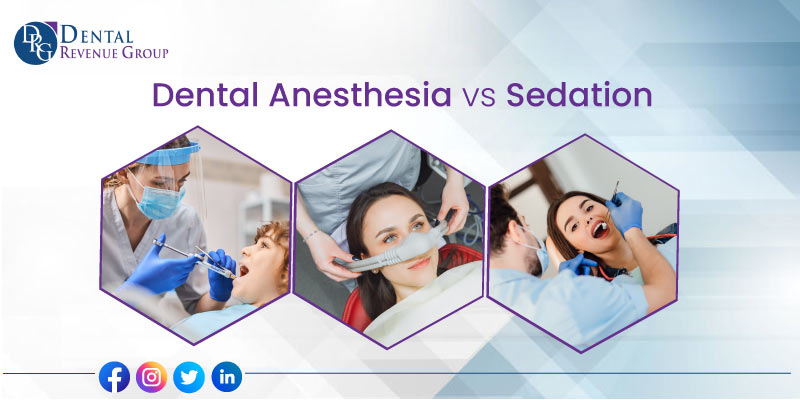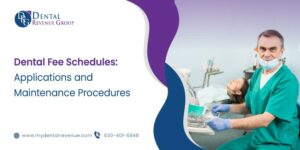If you’re looking for information about dental anesthesia vs. dental sedation, you’ve come to the right place. Dental anesthesia and sedation are two different procedures used for patients undergoing dental treatment. Both are very important in the dental field, allowing dentists to provide high-quality care and prevent pain for their patients. They are quite different from each other, and can help you get the very best oral hygiene. But what is the difference between them? Let’s find out below.
Dental Anesthesia
Dental anesthesia is used to manage pain during a dental procedure or surgery. It can relate to either local or general anesthesia. The primary objective of dental anesthesia is to block pain with drugs known as anesthetics. Depending on the form of dental anesthesia used, patients may remain awake or fall asleep entirely. Anesthesia is a drug that causes temporary loss of sensation, usually through local effects on the nervous system. It’s used to numb the mouth, jaw, and tongue during dentistry and surgery. It can also be used for surgeries such as cataract removal or tonsillectomy (removing tonsils).
The various types of dental anesthesia:
General Anesthesia
General anesthesia refers to using a medication injected or inhaled through anesthesia gas to render a patient entirely unconscious. This type of anesthesia is most commonly used in hospitals and also effective for dental procedures. It must be conducted by an anesthesiologist using the proper equipment. Your dentist may use local anesthetic gel around just one tooth to numb more surface area when removing it from its socket in general anesthesia.
Local Anesthesia
The use of medication to prevent pain in a specific area of the mouth is known as local anesthesia. A dentist will infuse the drug into the mouth, preventing nerves from feeling or transferring pain. This is the most common type of anesthesia. Dentists use local anesthesia for the following procedures:
- Cavity fillings
- Extraction of teeth
- Root canal therapy
- Replacement of a dental crown
How Much Does Anesthesia Cost?
The cost of anesthesia depends on many factors, including the procedure you’re undergoing and your dentist. Your insurance company can help with this cost as well.
The average price for general anesthesia (where patients are completely unconscious) is $1,00-$2,000 per hour or more. General anesthesia is more expensive than other types because it requires the presence of an additional healthcare provider to give the medication or a dentist to complete the treatment at an offsite medical facility.
Choosing a dentist with an on-site anesthesia provider and in-house surgical facilities can help you save money on general anesthesia.
Dental Billing For Anesthesia
It is critical to pre-authorize the work, document everything, and code correctly in all dental cases. Payers understand dental anesthesia, but regulations vary by plan, and there are always loopholes. Dental anesthesia care should always be pre-authorized before the procedure to ensure that the patient’s specific plan covers it. Research is also important in preparing a patient’s care plan because not all drugs can be billed to the patient, even if the service can.
The average dental case is worth ten ASA Units (5 base units x 5 times units). ASA codes should always be billed to the patient’s medical insurance, whereas dental codes should always be billed to the patient’s dental insurance. The CPT code for dental procedures is 41899, but it is a generic code that links to 00170, the code for general intraoral processes. The total time units would contain the professional portion for the anesthesiologist or CRNA if you used code 00170 with your appropriate modifiers.
Dental Sedation
Dental sedation refers to a variety of dental techniques used to keep patients calm and pleasant before and after dental procedures. It is critical to understand that dental sedation does not eliminate the pain but reduces a person’s consciousness level. Dental sedation is typically used in conjunction with local anesthesia by dentists. Sedation is a state of altered consciousness that reduces anxiety and pain. It is not the same as anesthesia, which causes you to lose your ability to feel pain and be aware of what’s happening around you. Sedation does not mean being asleep; it means being relaxed but still aware enough so that you can respond if needed.
The most common type of sedative used in anesthesia practice is midazolam (also known by its brand name, Versed). Midazolam will make people drowsy but won’t put them into a deep sleep or coma-like states like some other medications can do so easily!
The various levels of dental sedation:
Sedation is classified into three levels: minimal, moderate, and deep. Minimal sedation maintains the patient relaxed and in a low state of consciousness. Moderate sedation causes the patient to become sleepy while still responding to commands. Deep sedation causes patients to enter a sleep-like state while still responding to sharp touch.
How Much Does Sedation Cost?
The cost depends on the type of sedation dentistry. Nitrous oxide sedation is inexpensive and a low-cost add-on to your scheduled dental appointment. Oral sedation is more expensive than laughing gas but less expensive than IV anesthesia. Oral and inhaled sedation are both relatively inexpensive. Inhaled sedation will typically add $25 to $100 to the cost of any given dental procedure. Depending on the required doses, oral sedation can cost between $150 and $500. If you need an IV sedative, expect to pay $500 to $700 depending on the length of the procedure and whether or not your dentist needs to bring in a dental anesthetics specialist to assist.
Sedation And Insurance Coverage
If you have dental coverage, the possibilities are it covers the costs of sedation dentistry for at least major procedures like extractions and dental implants. Many insurance plans, however, do not cover sedative costs if you choose to be sedated for regular dental procedures like cleanings or fillings.
If your dental insurance company refuses to cover the cost of sedation but still wants to proceed with treatment, there are options for receiving the care you require while feeling no pain. Your dentist and dental team will collaborate with you to analyze different payment methods or pursue funding options to keep you within your budget. Many dental offices partner with in-house or outsourced savings programs to help patients reduce out-of-pocket costs.
What Is The Distinction Between Dental Anesthesia and Dental Sedation?
Many people mix up dental anesthesia and dental sedation. But in general, Anesthesia alleviates pain, and dental sedation alleviates anxiety. Every oral surgery procedure will necessitate the use of local anesthesia. Dental sedation is used when a dentist understands the patient needs extra help relaxing. Anesthesia can refer to either local or general anesthesia.
When discussing sedation and general anesthesia, it is useful to consider consciousness levels on a spectrum. On one end of the spectrum, the patient is completely awake with no sedation and is fully lucid. Dentists use anesthesia and sedation to relieve dental anxiety. Dentists often use sedation during routine procedures like tooth extractions or crowns, while anesthetics may be used for implants, gum surgeries, or root canals.
What Are the Risks and Side Effects Of Dental Sedation and Anesthesia?
Sedation and general anesthesia have the following risks and side effects:
- Low Blood pressure (hypotension)
- Low blood oxygen levels (hypoxia)
- Reduce Heart rate
- Heartbeat irregularities
- Throat discomfort
- Headache
- Shivering
- Becoming more sedated than intended
- The requirement for supplemental ventilation
- Intubation
- The procedure may be ineffective (not enough anesthesia)
Conclusion
In conclusion, both dental anesthesia and dental sedation have their benefits. If you feel that the dental procedure you need will be better for you to handle under sedation dentistry, then go ahead. Just make sure to do a bit of research on local dentists practicing sedation dentistry before going in for your treatment.











